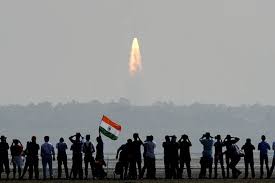
Breaking News
 Quantum Internet Explained: Lasers, Satellites, & Secure Communication | Impact Quantum Podcast
Quantum Internet Explained: Lasers, Satellites, & Secure Communication | Impact Quantum Podcast
 Stanford's secret censorship meeting exposed
Stanford's secret censorship meeting exposed
 Bill Gates Launches $1.4 Billion Soil Bioengineering Initiative...
Bill Gates Launches $1.4 Billion Soil Bioengineering Initiative...
 Did you know that Israel is literally NOT America's ally?
Did you know that Israel is literally NOT America's ally?
Top Tech News
 Goodbye, Cavities? Scientists Just Found a Way to Regrow Tooth Enamel
Goodbye, Cavities? Scientists Just Found a Way to Regrow Tooth Enamel
 Scientists Say They've Figured Out How to Transcribe Your Thoughts From an MRI Scan
Scientists Say They've Figured Out How to Transcribe Your Thoughts From an MRI Scan
 SanDisk stuffed 1 TB of storage into the smallest Type-C thumb drive ever
SanDisk stuffed 1 TB of storage into the smallest Type-C thumb drive ever
 Calling Dr. Grok. Can AI Do Better than Your Primary Physician?
Calling Dr. Grok. Can AI Do Better than Your Primary Physician?
 HUGE 32kWh LiFePO4 DIY Battery w/ 628Ah Cells! 90 Minute Build
HUGE 32kWh LiFePO4 DIY Battery w/ 628Ah Cells! 90 Minute Build
 What Has Bitcoin Become 17 Years After Satoshi Nakamoto Published The Whitepaper?
What Has Bitcoin Become 17 Years After Satoshi Nakamoto Published The Whitepaper?
 Japan just injected artificial blood into a human. No blood type needed. No refrigeration.
Japan just injected artificial blood into a human. No blood type needed. No refrigeration.
 The 6 Best LLM Tools To Run Models Locally
The 6 Best LLM Tools To Run Models Locally
 Testing My First Sodium-Ion Solar Battery
Testing My First Sodium-Ion Solar Battery
 A man once paralyzed from the waist down now stands on his own, not with machines or wires,...
A man once paralyzed from the waist down now stands on his own, not with machines or wires,...
India Launches Record-Breaking 104 Satellites on Single Rocket

The Polar Satellite Launch Vehicle (PSLV) blasted off from India's Satish Dhawan Space Centre at 10:58 p.m. EST (0358 GMT on Feb. 15) with three satellites from India and 101 smaller nano satellites (also called nanosats) from five other countries: the U.S., the Netherlands, Israel, Kazakhstan and Switzerland. This number crushes the previous record of 37 satellites sent into orbit aboard a single Russian Dnepr rocket in June 2014.
With a combined payload of about 3,040 lbs. (1,380 kilograms), the mission aims to launch the Cartosat-2 series satellite for Earth observation and the other 103 spacecraft into polar sun-synchronous orbit at an altitude of 314 miles (505 kilometers), ISRO officials said. [India's Record-Breaking Satellite Launch in Photos]



